- Home
- Sebastian Junger
Fire Page 12
Fire Read online
Page 12
The first armed clashes in Kosovo were reported during the summer of 1995, and within two years the KLA was strong enough to force a column of Serb armored vehicles to retreat from Drenica. After that the Serbs began a slow buildup of police and heavy weapons in Kosovo and on the Albanian border, culminating in the attack on Prekaz.
If anything, the massacres have radicalized the youth of Kosovo. The Serbs have already spent an estimated six billion dollars controlling the province. In some ways, they couldn’t have engineered a worse domestic problem if they’d tried; in some ways, they fell right into the KLA trap.
The next morning dawned cold and gray, with a mean little wind blowing trash down the streets; the cafés in town were completely empty. We packed the car and drove out of the city by a different route, hoping to drive into Drenica over some dirt roads that skirted the Serb checkpoints outside Prekaz. We wanted to see the villages that were getting shelled. The Serb government had bowed to international pressure and agreed to resolve the dispute through diplomacy, but meanwhile it was hammering the villages with rocket and artillery fire.
We had no problems at the first checkpoint—just the usual guns in our faces. But at the second one a police officer in an army jump-suit stormed over and ordered us out of the car. He was young, clean-shaven, and handsome in the way that Serb men often are: black hair, light skin, pale blue eyes. “You journalists are all spies!” he screamed at Harald. “You always make Serbs look bad! If I had my way, I’d tear the skin right off your faces!” He ripped the passports out of Harald’s hands and studied them while unloading a steady stream of hate. The guards were all standing around us with their machine guns leveled at our bellies. Finally the head cop came over and handed my passport back to me. “We know where you live,” he said darkly. “Write the truth or we’ll find you and kill you.”
As checkpoints go, it could have been worse—far worse. Albanian translators have been arrested and beaten at checkpoints, and the day before the attack on Prekaz, Harald and three other journalists were punched, dragged into a bunker, and questioned for an hour. When the police saw that Harald lived in Sarajevo, they accused him of being a Muslim—the predominant Albanian religion—and Harald had to prove he wasn’t by making the sign of the cross. Then the cops started going through Harald’s notebooks, demanding a translation of every word that was written down.
At one point, a cop spotted the name Frenki Simatović in Harald’s notebook, then turned to his friend and said, “Look, he even has the name of our boss in here.” Harald had no idea who Simatović was; he’d just written the name down during an interview and filed it away for future reference. Then they demanded to know if any of the reporters had ever been to a town called Prekaz. They kept asking over and over again: “Prekaz? Prekaz? Have any of you motherfuckers ever been to Prekaz?”
Prekaz is such a small town that before the massacre, people in Priština—a city half an hour away—had never heard of it. Harald just kept pleading ignorance, but when the Serbs finally released him, he called his editors and told them to be on the lookout. “I have no idea where it is; it’s not on the maps,” he said. “But something’s about to happen there. Just check the wires for a town called Prekaz.”
The next morning the first shells started to fall.
Back in 1991, as Yugoslavia began its descent into the hell of civil war, the newly elected Milošević had a somewhat delicate problem on his hands. He wanted to drive the Croats and Muslims out of large swaths of Yugoslavia, but he didn’t dare send the Yugoslav Army to do it.
The solution he came up with was simple. First, he surrounded himself with a trio of rabid nationalists—Jovica Stanišić, Radovan Stojičić, and Frano (“Frenki”) Simatović—known collectively as the Vojna Linija, or the Military Line. The Vojna Linija had little association with the Serb Army; it was a shadowy group within the Ministry of Interior Affairs, which was known as the MUP. After the Vojna Linija was established, Milošević began arming local Serb populations in Croatia and Bosnia, and training paramilitary forces. The weapons, distributed by Stojičić and Simatović, were taken from police and army depots. The paramilitary forces simply came out of the country’s jails.
According to Marko Nicović, a former Belgrade police chief who later had a falling-out with Milošević, convicts were told that their sentences would be suspended if they went to the front lines. Many were only too happy to oblige. The best-known groups were the White Eagles of Vojislav Šešelj, a virulent conservative later named to the Belgrade government; the Red Berets of Frenki Simatović; the unnamed forces of Captain Dragan; and—worst of all—the Tigers of Željko Ražnatović. Arkan, as Ražnatović was known, was wanted by Interpol for bank robberies and murders committed throughout Europe.
In 1992 the Yugoslav Army officially withdrew from Bosnia, but Serb paramilitary forces, including Simatović’s Red Berets, continued to operate there. That same year Šešelj and Arkan went to Kosovo to terrorize the locals into peacefulness, opening a recruiting office in Priština’s Grand Hotel and putting snipers up on the rooftops. (They also made tremendous amounts of money on the local black market.)
Both men turned up around Srebrenica in 1993, “cleansing” the Muslims from the small towns in eastern Bosnia. The Dayton Accords left the paramilitary foot soldiers without much to do, so they either sank back into Belgrade’s underworld or looked for other wars; some reportedly fought—and died—in the jungles of Zaire during the downfall of Mobutu Sese Seko. They didn’t have to wait long for another war in their own country, though: by 1997 Kosovo had ignited.
Harald and I had been in Kosovo about a week when things started to calm down; we could almost joke with the police at the checkpoints. The Serbs were still shelling the villages in central Drenica, though, and before leaving Kosovo, we decided to make one more stab at going there. We went in on a big, sunny day, the shadows of cumulus clouds sweeping across the Drenica hills and the fields mottled and bare in the early-spring sunlight. We were headed for Ačarevo, a town rumored to be the center of KLA resistance.
There were two ways to get in: walk six miles along some railroad tracks and hope no one shot at you, or drive down dirt roads across the central plateau and hope no one shot at you. The cops at the checkpoint warned us that there was a lot of gunfire on the road and suggested that we wear flak jackets. We thanked them and drove on, and as soon as we were out of sight we turned onto a dirt track that we thought led to Ačarevo.
The road climbed up onto a plateau, and we started across the highlands of Drenica, like some huge, slow beetle scratching across someone’s dinner table. “I don’t like this,” Harald muttered. I rolled down the window so we could hear gunfire more easily, and soon the landscape of war magically materialized all around us: bunkers and machine-gun nests and tanks on distant ridgetops. They emerged out of nowhere, like images brought out by a darkroom developer. But when I looked away, it took me a moment to find them again. They were there; then they weren’t. “This is crazy,” Harald said. “The entire fucking Serb Army is watching us.”
He turned the car around, and we plunged back down the dirt road and went jouncing out onto the hardtop. It was difficult to see how the KLA could fight a guerrilla war in a land like this: no forests to hide in; no mountains to run to; no swamps to stop the tanks. Just open fields and brush-choked hills. It would be suicide to confront the Serbs openly on such ground, so the KLA’s only choice is to carry on a war of harassment that may eventually cost the Serbs so much, in money and lives, that they have to pull out.
For their part, the Serbs have no stomach for a protracted fight in which farm kids from Drenica are popping out of the hedgerows with grenade launchers and AK-47s. A grenade launcher will easily take out a tank; a Molotov cocktail placed in its air intake will destroy one as well. The Serb population—largely spared the horrors of Bosnia but demoralized by massive inflation and a crippled economy—isn’t going to stand for a war in which too many of its young men get roasted aliv
e in their tanks.
For the Serb military, the only solution is terror. Every time a cop is killed, wipe out a family. Every time a police patrol gets shot up, level a village. Slaughter is a lot easier—and cheaper—than war, and it forces the young idealists in the KLA to decide whether they really want this or not. It’s nothing for a twenty-four-year-old with no future and no civil rights to sacrifice his life in a guerrilla movement; it happens all the time. But for him to sacrifice his kid brother and two sisters and mother: that’s another question entirely.
Harald and I continued north on a small paved road until we topped out on another hill, from which, far away, we finally saw Ačarevo. It wasn’t much, just a small white village shoved down between some hills. It rippled in the heat coming off the fields. We moved on, and around the next bend we found ourselves at a heavily reinforced checkpoint, with mortars by the road and bunkers dug into the hillsides. We stopped, and a cop came out cradling a machine gun. “Let me see your papers,” he said. He stood there studying them for a while as I sat sleepily in the passenger seat and Harald lit up a cigarette.
The sniper must have been waiting for a car to pass so the cop would have to step out into the road. He must have been lying there in the scrub oak, smoking cigarette after cigarette, completely wired with this new killing game, contemplating how he was going to escape when he finally lost his nerve and stopped shooting. The place was crawling with Serbs; he’d have only a few minutes to get out of there.
The first shot simply caused the cop and me to look at each other in puzzlement. The second one got Harald and me out of our seats. The third forced all of us—me, Harald, the cop—to dive behind the car. It’s amazing how fast animosity vanishes among people who are suddenly getting shot at. One cop fumbled with his radio; the others shoved their guns over the tops of the sandbags as they tried to figure out where to return fire. Pap…pap…pap. The guy on the radio shouted for help while Harald and I scrambled across the road and into the bunker. The cop next to us struggled to put on his flak jacket with the resigned look of someone who had to do this at least once a day.
The shooting stopped as suddenly as it had begun, and a cop dismissed us with a wave of the hand. “Get the fuck out of here,” he told us. We got back into the car and drove out of the highlands, past a town called Lauša—shot to pieces in the offensive—past the Serb police headquarters in Srbica, and right up to the gate of the munitions factory. The dirt road to Prekaz crosses in front of the gate, and we drove down it slowly, not wanting to give the impression that we were trying to slip past anyone.
The paramilitary soldiers didn’t stop us until we were right on the edge of town, coming at us out of a camouflaged bunker, with guns drawn and incredulous expressions on their faces, as if they couldn’t believe someone was stupid enough to defy them. They looked as if they would have stopped even a regular police car; they looked completely uncontrolled by anyone but themselves. One of them shouted for our papers while two others circled the car, guns trained on us. “We were just shot at by the KLA,” Harald said out the window. “Now we understand why you guys are here.”
It worked. The soldier studied our papers and then waved us through. As far as I could tell, the only reason the Serb military allowed journalists into Prekaz—a damning place, easily sealed off—was to spread word of what would happen to those who resisted.
Harald drove slowly down the town’s wide dirt street, which ended at a pasture. A dead cow lay rotting by the side of the road. Every house had its roof blown off, its windows shot out, or its walls caved in. Rooms spilled their contents to the world, as if disemboweled by some huge claw. Walls were pocked with mortar shell explosions; tongues of soot licked roofward out of windows. Bullet shells lay in gleaming little piles wherever someone had really put up a fight.
Harald and I walked through a wooden gate, splintered by artillery, and into the courtyard of a house. Two abandoned dogs, one with a wound on its back, growled at us from what used to be the doorstep of their home. Harald gave the dogs some sausage and a tin of sardines, and we stepped around them and into their family’s home. Schoolwork sat on tables, and jackets hung on pegs alongside things that had been blown to bits. It was odd what had been touched and what hadn’t.
After the attack this particular house had served as an outpost for the special police, who had gone through it room by room, laying their hands on everything that could be tipped over or broken open. Books, clothes, photo albums, and lamps all lay tangled on the floor. On top of one pile was a Serb porn magazine, discarded by the latest occupants.
We paid our respects to the fifty-five rectangles of freshly dug-up earth in the pasture above town, and then we drove back out to the world of the living. As we passed, the men at the bunker were posing for a group portrait—the destroyed town in the background, their machine guns wedged upright in the crooks of their arms. The men grinned broadly at us.
One of them wasn’t holding a gun in his hands. He was holding a huge double-bladed ax.
DISPATCHES FROM A DEAD WAR
1999
EDITOR’S NOTE: In July 1974 the Turkish military seized the northern third of Cyprus after a violent coup by right-wing Greek Cypriots—supported by Greece—appeared to threaten the Turkish Cypriot minority. Twenty-five years later Cyprus remains partitioned, a case study in how ethnic hatred perpetuates itself, but perhaps also a manual on how peace might be sustained in places like Kosovo. In February Harper’s Magazine sent Scott Anderson and Sebastian Junger to report on this intractable zone of conflict. To decide who would go to which side, they flipped an old Greek coin with a man’s head on one side and a war chariot on the other. The coin landed chariot side up, which meant that Anderson traveled to the Turkish Republic of Northern Cyprus (TRNC) and Junger to the Greek side, the Republic of Cyprus.
Sebastian Junger
REPUBLIC OF CYPRUS
A fool throws a stone into the sea
and a hundred wise men cannot pull it out.
—CYPRIOT PROVERB
The rusting yellow car sits on four flat tires against an old wall in the buffer zone, directly in front of a cement bunker with a machine-gun slit. Painted a cartoonish camouflage, the bunker is manned by a lone Greek Cypriot soldier, who smokes a cigarette as he watches us.
I have been walking the length of the buffer zone in Nicosia with a British peacekeeping soldier named Murphy, who carries a silver-tipped walking stick instead of a gun. He uses it to point things out. We’ve started at a UN observation post at the east end of town and progressed between the two irregularly parallel cease-fire lines under a dreary rain that patters through the thick no-man’s-land foliage and fills puddles in the road. Murphy has shown me where, in 1989, a Greek Cypriot soldier supposedly dropped his pants and from 164 feet away mooned his Turkish counterpart, who promptly shot him dead. The spot, now a patrol landmark, is identified by a sign: MONUMENT TO THE MOON. Farther along is a place where the UN-patrolled zone, known in Nicosia as the Green Line, squeezes down to the width of a narrow street. The balconies of two buildings on either side extend to within ten feet of each other, and a few years ago Greek and Turkish soldiers took to strapping knives to the ends of long poles and jousting with each other. In other places they sling stones or shout insults.
“We can’t do anything about it unless we see it happen,” Murphy tells me. “It’s all right for the [Greeks] to say, ‘These Turkish soldiers are throwing stones at us.’…So we phone up the Turks and say, ‘We’ve had reports that some of your soldiers are throwing stones.’ The first thing they say is, ‘Well, did you see it?’ And we say, ‘No, we didn’t.’ So there’s not a lot we can do.”
Now we stand in the rain in front of the old yellow car, which also is identified by a sign, YELLOW CAR. A landmark for UN patrols, the car was once the focus of a bitter dispute between the Greeks and the Turks. In the original delineations of the buffer zone, Turkish territory was described as extending from the “front” of the yellow car
to the corner of a building. By “front” the UN meant the end of the car where the headlights are located. The Turks, however, argued that the front was the end of the car nearest to one of their observation posts; the resulting difference in the angle of the cease-fire line would give them another fifty square feet of territory.
“They finally worked out a compromise,” Murphy tells me. “The line stayed where it was, but a Turkish soldier gets to stand in the triangle of disputed territory for five minutes each hour.”
The Green Line was established in 1963 by a British commander who was trying to quell street fighting that had erupted between Greek and Turkish militias. He supposedly took a green pencil and bisected a map of Nicosia from one side of the old Venetian fortifications to the other. Eleven years later, after the Turkish Army overran a third of Cyprus, the buffer zone was extended across the length of the island, a distance of 112 miles. A few months later the United Nations Peacekeeping Forces in Cyprus [UNFICYP] oversaw a massive, but peaceful, population transfer of 40,000 Turkish Cypriots from the south to the north to replace the estimated 175,000 displaced Greek Cypriots, most of whom had fled south during the invasion. The exodus was proclaimed voluntary as well as temporary, but of course it was neither. When the Turkish Republic of Northern Cyprus finally declared itself to be an independent state in 1983, all but the most optimistic refugees realized that they were never going home.
Today the two countries mark their borders as the cease-fire lines that were established in 1974. Between the lines is the buffer zone that none of the 190,000 Turkish Cypriots to the north or the 655,000 Greek Cypriots to the south may enter without special permission. Per capita, Cyprus is the most militarized country in the world after North and South Korea—with 35,000 Turkish and Turkish Cypriot troops and 14,500 Greek Cypriot troops, monitored by 1,200 UN soldiers—yet it is one of the most peaceful: only 16 people have been killed along the divide since 1974. Greek Cypriots refer to the buffer as the dead zone. On Greek Cypriot maps, the Turkish Republic of Northern Cyprus is labeled “Area Occupied by Turkish Troops,” and in conversation, Greek Cypriots often refer to it as the so-called Turkish Republic or simply the pseudo-state. There are no embassies or consulates in the TRNC besides Turkey’s, and the UN does not maintain formal diplomatic relations with them. There is a checkpoint at Ledra Palace, in the middle of the buffer zone on the western edge of Nicosia, but only foreign passport holders may cross through it, and only from the south to the north and then back again. You cannot go in the other direction, and if you visit the TRNC, you must be out by 5:00 P.M.

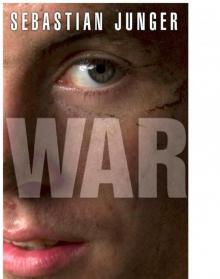 War
War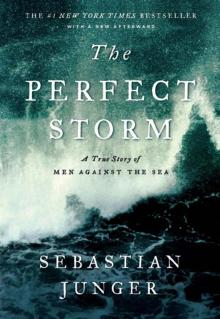 The Perfect Storm: A True Story of Men Against the Sea
The Perfect Storm: A True Story of Men Against the Sea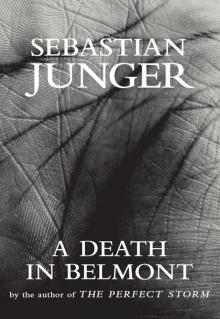 A Death in Belmont
A Death in Belmont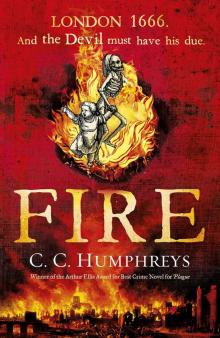 Fire
Fire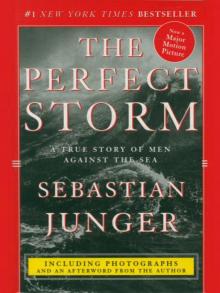 The Perfect Storm
The Perfect Storm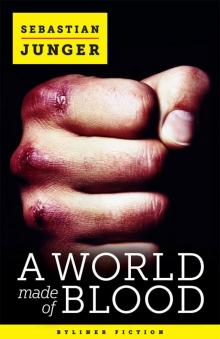 A World Made of Blood (Kindle Single)
A World Made of Blood (Kindle Single)